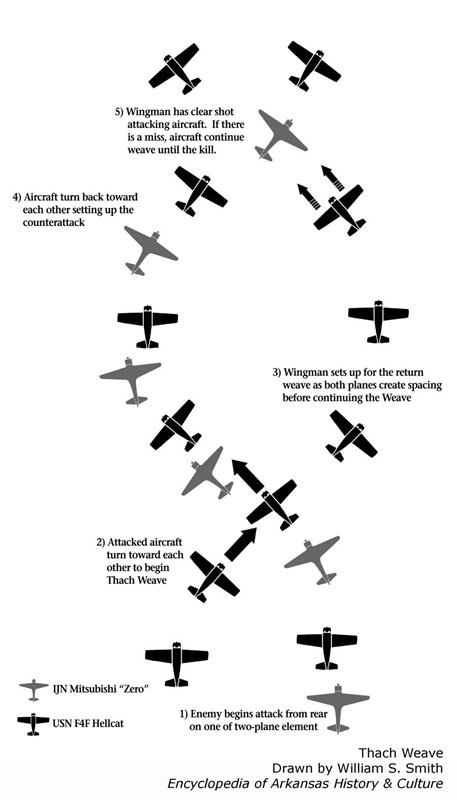Two Combat Aircraft Captured and Studied in WWII Pacific Theater
During the heated contest of the WWII Pacific Ocean War both the US Pacific fleet and the Axis forces of the Imperial Japanese captured each other’s primary fighter and after studying them, gained valuable intelligence on tactics. The first significant fighter aircraft to be captured, reconstructed and thoroughly tested was by the Japanese during the invasion of Wake Island on December 23, 1941. Shortly after the Pearl Harbor attack on December 7th, an F-4F Wildcat fighter crashed on the coral reef after being damaged in combat. This was an excellent opportunity for the Japanese to evaluate the primary carrier based fighter of the US Navy!
Once transported back to Japan and repaired, the Japanese put the aircraft through a number of tests and found it to be a tough and sturdy fighting platform. Well armored to protect the pilot, with self-sealing gas tanks and heavily armed with four 50 caliber machine guns, the Japanese were impressed with the reliability of the aircraft. Though it was slower than the A6M Zero and not as maneuverable, it could take punishment and dish it out as well as being able to out dive the Zero at 400 miles per hour! A dive that would cause a Zero to break into pieces! As a result the Japanese developed tactics to offset the strengths of the Wildcat using high speed tactics to stay away from the armament of the US Navy F-4F
Not until the “Thatch Weave” used by F-4F Squadrons to neutralize Zero attacks, did the US Navy gain some parody against their Japanese opponents. A US Naval fighter pilot by the name of John S. Thatch, a flight commander, invented a tactic for the Japanese Zero to get into a kill position but instead be maneuvered into a trap as other Wildcats weaved around to shoot the attacker down! During the battle for Guadal Canal, US Marine Corps fighters managed a 1 to 1 to 2 to 1 kill ratio against their Japanese foes in that hotly contested beginning of the “Island Hopping” campaign. Not until the F-6F Hellcat by Grumman, in early 1944 did the US Navy finally have the air superiority machine they needed to dominate Japanese fighters. The makers of the F4F Wildcat basically took the old Wildcat design and made it faster and more maneuverable. It outperformed the Mitsubishi Zero in every regime, speed, turning capability, firepower, and even in resistance to battle damage.

In 1942 the US forces finally captured an A6M Zero on Akutan Island in the Aleutian Chain off the shores of Alaska. What they learned from the nearly intact and repaired fighter altered tactics that would make dogfighting for American aviators more successful. They found that in order to make the Zero so nimble and quick, Japanese engineers had abandoned all safety measures to ensure pilot survival. There was no armor plating around the cockpit, no self-sealing gas tank to prevent an onboard fire if bullets pierced it. The sheet metal on the fuselage was so thin that unless a pilot climbing into the cockpit stuck the toes of his boots into the designated hard points, he could actually damage the metal skin of the plane. It was also discovered that the Zero was so fragile that it could not dive with an American fighter or it would break up.
As a result, American fighter pilots could approach aerial combat tactics with more success. Why Claire Chennault’s findings were not widely distributed among the US forces remains a mystery as he and the American Volunteer Group had been fighting the Japanese since December 7th in China and racking up record kills using the P-40 Warhawk as the Flying Tigers main combat aircraft. Had this intelligence been widely shared many lives of US pilots could have been saved!
"Destroying the New World Order"
THANK YOU FOR SUPPORTING THE SITE!
Latest Activity
- Top News
- ·
- Everything
What was the Significance of the F-94 C and What role in History?
FLUORIDEGATE: An American Tragedy. a film by Dr. David Kennedy
Rendezvous With The Unknown
Shadows in the Wind
Mossad: we create a pretend world, we are a global production company... the world is our stage
The Alvin II Encounter: Was There A Living Dinosaur Involved?
All In The Family | Mike Meets Archie For The First Time | The Norman Lear Effect
entitlement
Death Threats for Assisting ICE?
'They’re Waiting for Us to Die': Area 51 Veterans Plead for Trump’s Help | Elizabeth Vargas Reports
© 2025 Created by truth.
Powered by
![]()
You need to be a member of 12160 Social Network to add comments!
Join 12160 Social Network